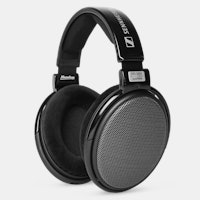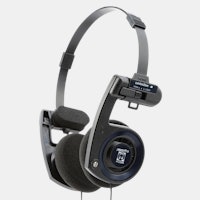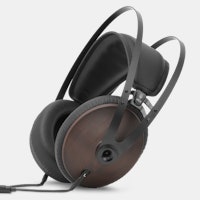Click to view our Accessibility Statement or contact us with accessibility-related questions

















Headphone Modding

search
close
Sort by: Newest
keyboard_arrow_downJynxy
0
Apr 24, 2023
I know it sounds weird / funny but I dare to ask
Would it be possible to modify the ATH WB2022 ??
Ken101
0
Jul 21, 2021
I'd recommend buying a good equalizer and basically make any/all of your headphones sound pretty much any way you'd like.

abm0
20
Sep 25, 2021
Ken101Sort of true, but only if you put in serious effort, which might end up being the same amount as for the physical mod, and the downside would be that you can't take your EQ settings "with you" to every source device you might want to use in the future whereas the headphone mods "go with you everywhere".

asimahmedk
3
May 9, 2021
Hi,
I just took ATH M50X from a friend, and since i am used to open back headphones it dont like its narrow sound stage and even the bass response is not very good compared to my Takstar Hi-2050. can you suggest some easy mod? I havent done any modding before
Indrajit
0
Apr 26, 2021
Hi I have a question. I had opened up my Nad Viso HP50 and after unscrewing had found a loose black foam adjusted over the driver. I took off the foam and then put it back in its place without using glue. May I know if such loose black foams near drivers are supposed to be glued or are they supposed to be just kept back in their places without any glue.
SpiderJerusalem
20
Dec 8, 2020
With so many headphones available i don't see the point in modding. Just buy one with a sound signature you like, pretty simple.

quicklytoo4
821
May 12, 2021
there are so many things you can't eq... soundstage, dynamics, responsiveness etc modding can actually tweak those

phoenixsong
1055
Oct 16, 2020
Hi, does the type and brand of tissue/toilet paper matter much for the in-front-of-driver mods?

phoenixsong
1055
Oct 16, 2020
phoenixsongOk nvm I've tried different samples and it seems different thickness, material and quality does affect the resulting sound
Monkdoctor
22
Jun 12, 2020
I gave the stock drivers and ear pad to my 15 year old. This is what he came up with. 







javierquesada202
3
Jan 1, 2021
Monkdoctorit is so cool, i have 14 years old, and the audifile is my best hobby, i like so much it
Showing 26 of 74
PRODUCTS YOU MAY LIKE
Trending Posts in Audiophile
magica
What lead/cable do i need?
i own a Drop + EPOS PC38X Gaming Headset and i need a new cable that connects the headset to the computer. i dont know what its called and i cant work out what to look for on amazon etc. could someone please help me with this
Dec 21, 2024

MrChiSox
New addition to the stable.
I made the decision to take advantage of the $600. price on the HiFiMan Arya Stealth, here pictured with the Meze 109 Pro. I think 2025 is going to be a really uneventful year so far as new purchases. I've also upgraded my Fiio BTR7 to the newly released BTR17 and I purchased the Earmen stack which consists of Amplifier, Linear PS, DAC & Streamer.
Dec 19, 2024

RNT47
Until when will the Sennheiser 58X and 6XX will be at discount price?
I'm planning on buying either one on the 18th and i'm worried i'll miss the discounted prices
Dec 16, 2024
MusicLvr
Drop x Campfire Audio Darkstar Review
The Darkstar definitely has a a unique sound that has an audiophile sub-bass bias. It is a balanced sound with open sounding mids and well extended treble. There is no mid-bass bloat thanks to...
Dec 4, 2024
bill.davies
BMR2 discounts for BMR1 owners
How about providing a BMR2 discount for BMR1 owners? Most of the "improvements" in the next gen should really have been there in the first which was a pretty big disappointment for most of us. UPDATE: 40% discount offered. That's great, I'm in. Thank you DROP.
Dec 3, 2024
drPOGI
DROP BMR1 Broken?
Can anyone help me with this? Went away for dinner and came back home to my speakers making this static sound(Video Link). Its like this both in Line In and Bluetooth mode. These speakers were super super hot but I was told that it was normal for it to be this way. Sucks that literally I am just about two months out of the 1 year warranty :/ If anyone can help me that'd be great.
Dec 3, 2024

















Basically, I really want to make headphones sound better for everyone and I think that manufacturers should hear how good their headphones can sound if they take more time to tune them. When you buy a high-end model, you expect that the manufacturer has already done all of the engineering for you- from tonality to frequency response to resolution. You assume you’re going to get great design and performance. These days, I typically modify because I want to personalize the sound, which is often what people are looking to do when they buy specific pieces of gear- like a tube amp or a DAC.
What do I want to change?
The start for me actually wasn’t the sound, but the looks that I wanted to change. I thought, “What would happen if I put wood cups on my pair of Audio-Technicas?” (Audio-Technica uses wood cups on their other headphones, like the ATH-W10VTG, and those look good.) Once I began tuning, I realized that using wood cups changes more than the looks; the sound will also change depending on the resonant properties of the cup. That was my “Aha!” moment, my realization that the material used to make the headphones really matters to the sound. I started looking around online and learning what other people were doing with their headphones. I had the ATH-ES10 and found that nobody else had modified them, so I decided to do it myself. The Fostex T50RP had a huge modification thread. That community was so crazy! It was a treasure trove of information on modding headphones, and I took all of my modding cues for my first headphone from there.
What’s the deal with measurement rigs?
I started out using a wand-type omnidirectional microphone (the UMIK-1) to measure the sonic frequencies of my headphones. One of the most effective methods I found early on was to rest the microphone on a pillow or soft surface, and then couple the headphone to that surface. That way, the mic is sandwiched between the headphone and the pillow surface. A good seal helps with bass response, and because that microphone was omnidirectional, it captured the midrange and treble response pretty well too.
First, I do a “taste test” and listen to the headphone to determine what exactly needs to be done. Then, I try a few things that I know will nudge it back in the right direction and do a few more listening sessions with a number of challenging audio tracks that I know very well. After I’ve achieved a reasonable change in tone, I do some measurements to verify the results.
What are some different techniques?
There are many ways to approach a headphone. The first and most common thing that people do is stuff the back side of the enclosure with some kind of foam material, thereby dampening airflow and reflections. This will hopefully tighten up the lower frequencies. Swapping out the ear pads can also change the response in a very positive way, and I would argue that may actually be the most important change you can make to a headphone. The pads can absorb certain frequencies or change the distance of the driver to your ear, which can change how certain frequencies interact with the enclosed space. More advanced techniques involve putting things in front of the driver in order to obstruct and reduce higher frequencies and normalize the response of the driver. Other advanced techniques involve “mass loading” (in the case of mods with materials like Dynamat and Blu-Tack); treating the diaphragm of the driver (that’s what I suspect LFF does to his headphones); and what I’ve started dabbling with recently: using metal foil tape to improve the rigidity of the enclosure and intentionally induce reflections (I think that’s what is happening).
There are a lot of different materials involved in a mod. I think acoustic foam and various kinds of open-cell foam are the most popular types, but there are others with specific purposes—like Dynamat and Blu-Tack, which can be used to increase the mass of an enclosure and potentially change the resonance characteristics of the enclosure itself. Felt can be used to dampen reflections and reduce high frequencies when it’s placed in front of the driver. For a more dramatic effect, some modders will use toilet paper in place of felt. :) Closed-cell foam can be used very effectively to dampen even more reflection, as was done in the Anaxilus mod of the Sennheiser HD800. Rug liners typically have the same properties as closed-cell foam, with the added benefit of being more open.
From listening, I know that this headphone runs into some trouble in the high frequencies, so the first thing I did was look to see what HiFiMAN had done to the front side of the driver. When I opened up the enclosure, I found a single layer of felt covering the driver. That, combined with the filter cloth of the ear pads, should have reduced the high frequencies—but it didn’t seem to be enough. I thought I would replace the felt layer with more layers of toilet paper (taking cues from Marvey) and other kinds of paper (like a medical face-mask filter or some tissue), since these are better at damping high frequencies. Then, I thought I could swap out the ear pads, since more distance from the ear to the driver and help get back some of the sense of “air” that the papers would get rid of. Just those very simple changes were enough to nudge the response of the HE-350 to something I would consider a really good improvement. The modification didn’t take that long to finish, and actually, the most difficult part was fitting the ear pads back on! The changes I was able to make are a sign to me that this is a good platform for modifying. I get a great sense of satisfaction that I want to share when I make headphones sound better.
The Results: Before (Blue Line) & After (Red Line)
Any Questions?
I will be travelling a bit during the summer and may have some issues with my internet connection, but feel free to ask me some questions or to discuss headphone modding. I’ll be happy to help when I can.
Also, you can read more about frequency response graphs here: https://www.massdrop.com/article/understanding-headphone-reviews
And the Massdrop x HiFiMAN HE-350 is here: https://www.massdrop.com/buy/massdrop-x-hifiman-he-350